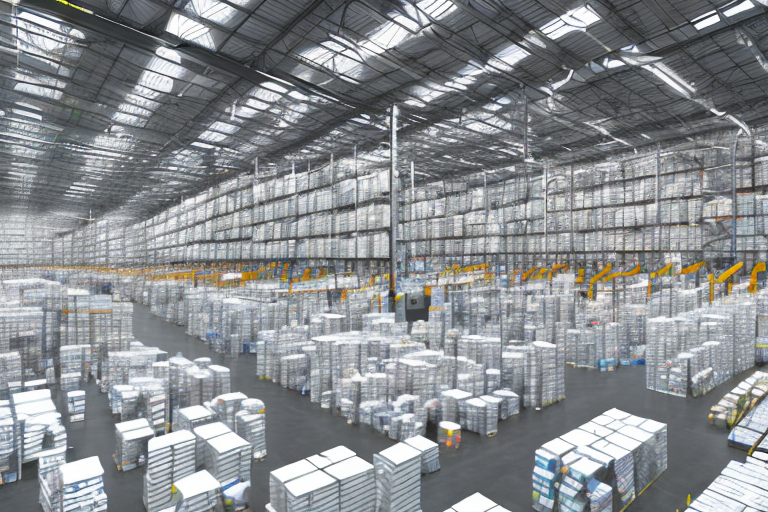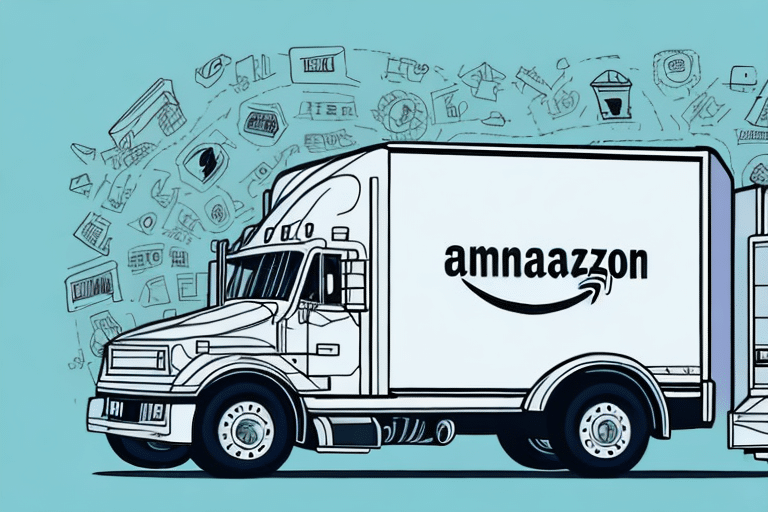The Rise of Product Returns in the E-Commerce Industry
The e-commerce industry has experienced explosive growth in recent years, leading to a significant increase in the number of product returns. According to a report by CNBC, online return rates can reach up to 30%, compared to just 8.89% for in-store purchases. This trend has been further amplified due to the COVID-19 pandemic, as more consumers have shifted to online shopping to avoid crowded physical stores.
High return rates pose logistical challenges for e-commerce companies and have a substantial environmental impact. Many returned items end up in landfills, exacerbating waste issues within the fashion and retail sectors. In response, some companies are adopting sustainable practices, such as reselling returned goods or donating them to charity. However, more comprehensive measures are necessary to tackle this escalating problem and mitigate the environmental footprint of e-commerce returns.
Amazon's Return Policy: Benefits and Challenges
Amazon is renowned for its customer-friendly policies, with its returns policy being a prime example. The company permits customers to return most items within 30 days of delivery for a full refund. In certain cases, Amazon covers the return shipping costs. While this policy enhances customer satisfaction, it also imposes a significant financial strain on Amazon. In 2019 alone, the company spent approximately $7.2 billion on processing returns.[1] Nevertheless, Amazon's dedication to customer satisfaction has fostered a loyal customer base, helping it maintain its dominance in the e-commerce market.
To alleviate the financial burden, Amazon has introduced stricter rules for specific product categories. For instance, electronics can only be returned if they are unopened and unused, and clothing items must retain their tags. These measures have decreased frivolous returns but have also caused some dissatisfaction among customers who perceive the rules as overly restrictive.
Despite these challenges, Amazon's generous returns policy remains integral to its business strategy. By offering a hassle-free returns experience, Amazon builds trust with customers, encouraging repeat purchases. While the costs associated with returns are substantial, they are offset by long-term customer loyalty and satisfaction.
The Lifecycle of Returned Products at Amazon
Inspection and Sorting
Once a product is returned to Amazon, it undergoes a thorough inspection process to determine its next steps. This process takes place in one of Amazon's numerous warehouses globally. Returned items are sorted and categorized based on their condition. Products still in original packaging and undamaged may be resold as new, while others are classified as "used" and offered at a discounted price.
Repair and Refurbishment
Not all returned products are immediately suitable for resale. Items that are damaged or missing parts may be sent to repair centers. Amazon has dedicated facilities for refurbishing products, restoring them to a saleable condition. Refurbished products are sold under programs like Amazon Renewed, providing customers with high-quality items at reduced prices.
Liquidation and Donation
For products that cannot be repaired or resold, Amazon may send them to liquidation centers. Here, items are sold in bulk to third-party sellers who attempt to resell them on various marketplaces. Alternatively, Amazon donates unsellable products to charitable organizations, aligning with their commitment to sustainability and social responsibility.
Environmental and Economic Impacts of Returns
Environmental Concerns
The returns process significantly impacts the environment. Returned products often require additional shipping, contributing to increased carbon emissions. Furthermore, not all returned items can be recycled or resold, leading to higher waste generation. Amazon has partnered with organizations like Goodwill to donate unsellable goods and has invested in initiatives to enhance recycling efforts. Despite these measures, the environmental burden of product returns remains a critical issue.
Economic Implications
High return rates impose substantial economic costs on Amazon and other retailers. Processing returns involves logistics, restocking, potential refurbishment, and disposal costs. For smaller retailers, these expenses can be particularly burdensome. However, efficient returns management can also present opportunities to bolster customer loyalty by providing excellent service, thereby fostering repeat business.
Role of Third-Party Sellers in Amazon's Return Process
Third-party sellers are integral to Amazon's returns ecosystem. When customers return products purchased from these sellers, the responsibility for handling the return typically falls on the seller. This arrangement can complicate the returns and refunds process, especially when multiple sellers are involved in a single transaction. While Amazon provides systems to assist sellers in managing returns, newcomers to the platform may find the process challenging.
Innovations and Future Solutions in Returns Management
Technological Advancements
E-commerce companies are exploring various technologies to reduce return rates and manage returns more effectively. Virtual try-on tools, for instance, allow customers to visualize products before purchasing, thereby reducing returns due to mismatched expectations. Additionally, advanced data analytics can help pinpoint common reasons for returns, enabling companies to address these issues proactively.
Sustainable Practices
To minimize the environmental impact of returns, Amazon and other retailers are adopting sustainable practices. Innovations in packaging aim to reduce waste and make products easier to ship and return. Furthermore, partnerships with recycling and donation organizations help ensure that unsellable items are disposed of responsibly, aligning business operations with environmental stewardship.
Tips for Consumers to Minimize Returns
Consumers can take several steps to reduce the likelihood of needing to return items purchased on Amazon. Firstly, thoroughly reviewing product descriptions and customer reviews can provide valuable insights into product quality and suitability. Paying close attention to sizing information is crucial for apparel purchases, minimizing returns due to poor fit. Additionally, reaching out to sellers with questions before making a purchase can clarify any uncertainties, leading to more informed buying decisions.
Conclusion: Sustainability in E-Commerce Returns
Product returns are an inevitable aspect of the e-commerce landscape. As the industry continues to expand, it is imperative for companies like Amazon to implement sustainable returns management strategies. Investing in recycling initiatives, collaborating with charitable organizations, and leveraging new technologies can help mitigate the environmental impact of returns while maintaining high levels of customer satisfaction. Through these efforts, Amazon and other retailers can uphold their commitment to sustainability and responsible business practices.
---
**References:**




















